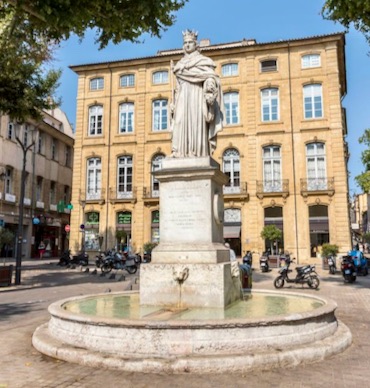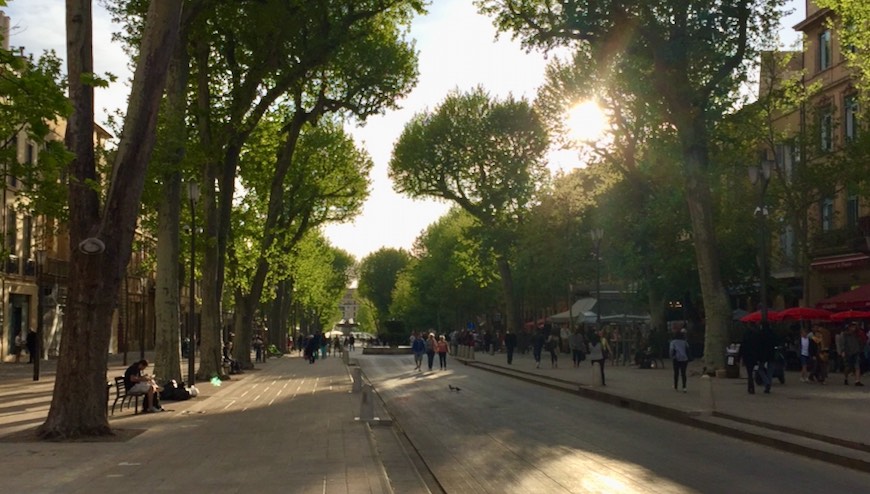At nearly ½-kilometer in length, the Cours Mirabeau connects old town Aix-en-Provence to the north with the historically elegant Mazarin district to the south. Four fountains dot the center of the grand avenue, with the iconic Fontaine de la Rotonde (built in 1860) punctuating the west end and the King Roi René fountain, designed in 1819 by Pierre-Henri Révoil, surveying from the east. The royal statue depicts him wearing the crown of the Counts of Provence with a scepter in one hand and Muscat grapes – which he introduced to the Provence – in the other.
 A Brief History of the Cours Mirabeau
A Brief History of the Cours Mirabeau
Named after Honoré Gabriel Riqueti, comte de Mirabeau, a prominent figure of the French Revolution, the Cours Mirabeau dates back to the 17th century when it was first laid out by Archbishop Michel Mazarin as a grand promenade where the city’s elite could see and be seen.
During the French Revolution, the Cours Mirabeau played a significant role in the political and social upheaval of the time. In 1790, the avenue was the site of a major riot, when a group of protesters marched on the city hall to demand better representation in government.
In the 19th century, the Cours Mirabeau underwent further changes as the city grew and new buildings were constructed. Many of the mansions that had been built in the previous century were converted into a bustling commercial center with shops, restaurants, and hotels.
Traffic is restricted to allow only permitted vehicles, making this grand avenue even more pedestrian-friendly for strolling to admire the beautiful architecture or pausing at one of the cafes to people-watch as you sip from a glass of wine (an unofficial national French pastime).

